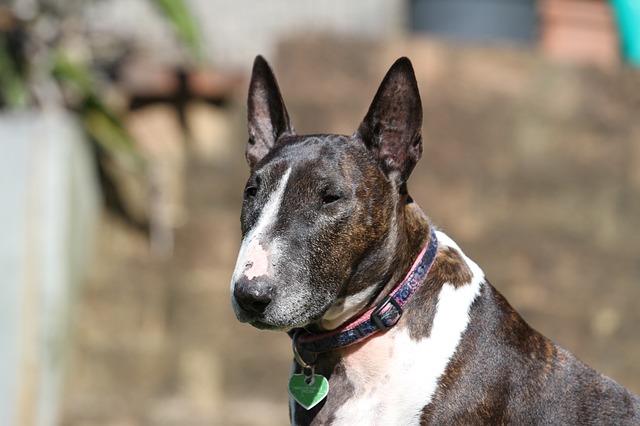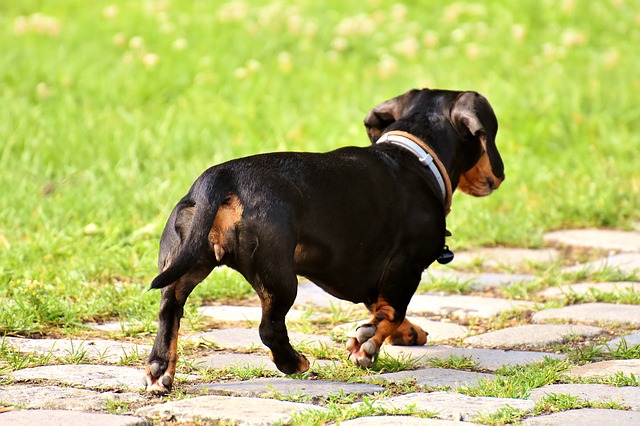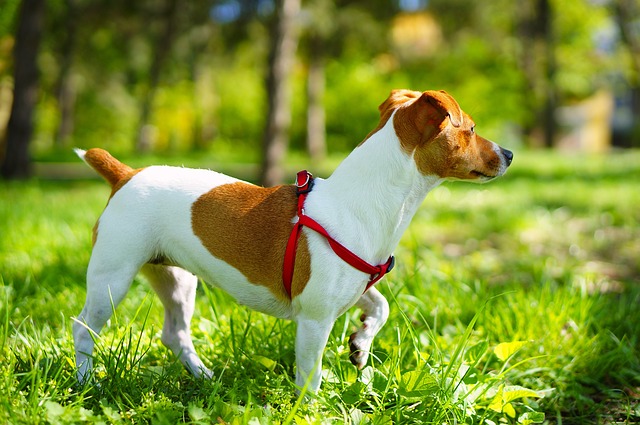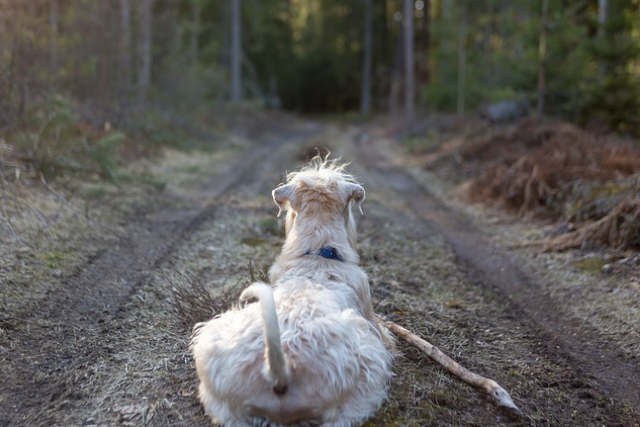One second your dog is by your side, and the next, you see her turn tail and sprint in the other direction. Or maybe you let her into the yard for a bathroom break, and now she’s nowhere to be found. It takes only one second, only one small mistake, to lose your dog. It’s a situation that can quickly turn dangerous, and every second she’s missing, you don’t know if she’s hurt, afraid, hungry, or in trouble.
It’s up to you to keep your dog safe, and part of that job is being prepared. Dogs run away for different reasons, and even when your dog is your absolute best friend, there’s still the chance she could disappear from sight. With these seven steps, you can make sure your dog is always safe by your side.

1. Your Dog Should Always Wear a Collar With ID Tags
The simplest and easiest way to never lose your dog is to make sure she always wears her collar with a dog ID tag. The collar is the first thing people look at when they find an unfamiliar dog. If your dog has her name and your phone number around her neck, it’ll take only minutes for you to be reunited.
A lot of pup parents are good about giving their dogs collars, but a collar won’t do much good if it doesn’t have some kind of identification attached to it. It’s recommended to have your dog’s registration tag, rabies tag, and an additional tag with your phone number permanently attached to their collar. If you find a cute new collar and want to switch, make sure you also transfer the tags. Even if your dog is doing nothing but lounging at home, she should still wear her collar. You never know when she might need it.
2. Get Your Dog a Microchip
Thanks to affordable pet microchips, reunions between families and lost dogs happen a lot more often than they used to. When your dog slips out of her collar on a walk or darts out the door “naked” after a bath, she’ll still have her microchip as a form of identification. A microchip is a small device (about the size of a grain of rice) that’s painlessly inserted beneath the skin. It’s connected to a unique number that is then linked to your family’s contact information. All veterinary offices, animal shelters, and even some dedicated pet owners, own microchip scanners for the explicit purpose of reuniting lost dogs with their families. Once your dog has a microchip, she’ll be protected for the rest of her life. Call a nearby vet or animal shelter to talk about getting one.
RELATED: 10 Best Dog Doors

3. Always Use a Leash
Countless dogs have gone missing because their families decided to ditch their leashes. If you’re not 100% confident your dog will respond to your voice amidst distractions, she should never be allowed outside a fence without a leash. Most public places, like the sidewalk outside your house and neighborhood parks, require dogs to be on leash. The rules are meant to keep your dog safe, not make her feel restrained. Unleashed dogs can dart into traffic when they’re scared or sprint for miles in pursuit of perceived prey. If you don’t have complete control over who walks by and what animals wander near your area, taking off your dog’s leash is a huge risk. Instead, use a long 30-foot lead to give her a bit freedom while still keeping her safe.
4. Spay or Neuter Your Dog
Intact male dogs are notorious for getting lost. Their instinct tells them to do whatever it takes to find a girlfriend, and that can mean scaling a six-foot fence or chewing their way through a window screen. ASPCA says,
“An intact male will do just about anything to find a mate, including finding creative ways escape from the house. Once he’s free to roam, he risks injury in traffic and fights with other male animals.”
Even female dogs in heat are known for wandering neighborhoods in hopes of finding acceptable beaus. Along with other benefits like a decreased risk of developing cancer, spaying or neutering your dog will eliminate that sexual urge to roam and keep them safe at home.

5. Secure Your Surroundings
Whether your dog is outside or inside, she might not be as secure as you think. Holes in the fence, a loose window screen, a rusty gate lock—if you’re not careful, there are ways she could get out. Any dog, regardless of personality, could potentially investigate a loose board in the fence or an open screen door and find themselves suddenly on the other side.
It’s even more important to secure the area if your dog’s a known escape artist. Escape artist dogs have a frustrating knack for disappearing from seemingly secure areas. They jump tall fences, dig escape tunnels, and burst through window panes. If that sounds like your dog, take a walk around your fence. Check for loose boards, holes, and places where your dog could climb and jump over. You might need to invest in a new, taller fence and a dog-proof gate latch. Inside the house, secure all windows and doors.
6. Always Supervise
A secure fence is important, but dogs shouldn’t be left outside on their own. They can get into trouble when they’re not supervised, and some decide to test their boundaries. Most dogs that disappear from yards do so when their families either aren’t home or are inside oblivious to what’s happening. Some escape their fences and wander off, and others are stolen. Home Again says,
” Many lost dogs are just bored pets that have found a way to escape from a yard or car—and, according to some experts, as many as 1.5 million dogs and cats get stolen every year from those same places. Most of them are never recovered.”
If you can’t be outside with your dog, don’t leave her unsupervised. When you leave the house, keep her in a closed off room or a crate. 
7. Prioritize Training
When all else fails, your dog’s training will be the difference between losing her and keeping her safe. Cues like “sit” and “shake” are a good place to start, but teaching a reliable recall is essential. Coming when called seems simple, but it’s far from easy. Your dog’s success will greatly depend on her personality and prey drive. Dogs get distracted by other animals, people, strange sounds, and even smells. The key to a good recall is training your dog to ignore everything else that isn’t your voice. It takes a lot of time and practice, but it’s training you can’t skip; it might one day save your dog’s life.
 Toledo, United States.
Toledo, United States.
